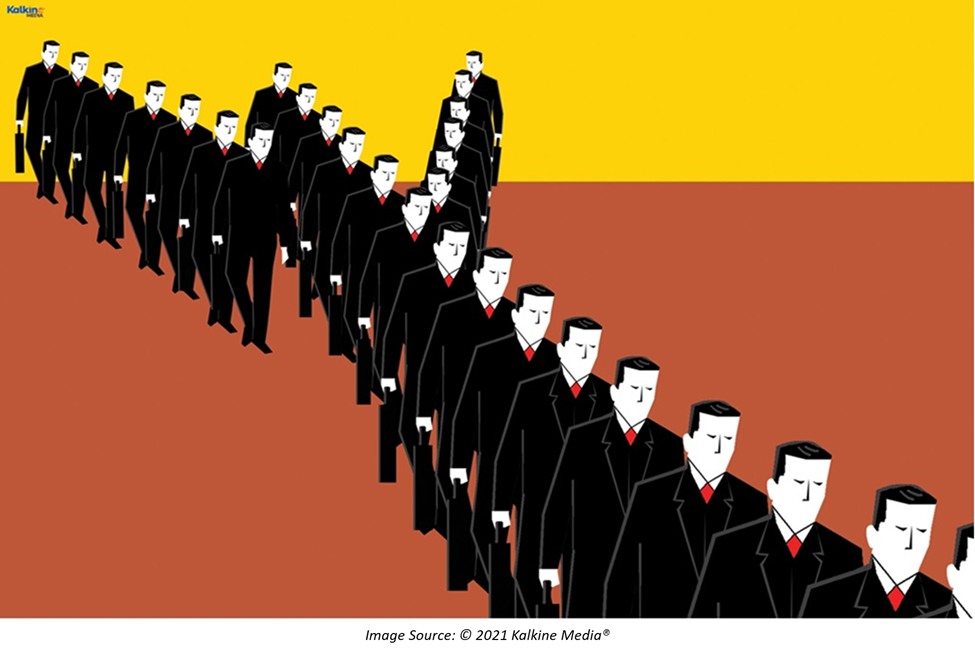Highlights
- The labour market seems to be ending the year on a positive note as overall employment reaches a record high and payroll jobs inch up.
- As per the RBA, the behaviour of wages remains largely unpredictable.
- The Australian Chamber of Commerce and Industry has proposed the idea of bringing older workers back into the workforce.
The Australian labour market has undergone a bumpy ride in 2021 amid sporadic lockdowns triggered by the coronavirus pandemic. Despite various challenges, the labour market finally seems to be ending the year on a positive note as overall employment reaches a record high and payroll jobs data exhibits a recovery. However, the Omicron variant has emerged as a source of freshly added uncertainty for the labour market outlook, as re-implementation of lockdowns is being expected following its outbreak.

The concerns surrounding the new strain can be attributed to the massive damage to the labour market that occurred in the aftermath of the Delta variant outbreak. The economy contracted by 1.9% in the third quarter due to the Delta variant-induced lockdowns. However, the economic recovery has been quick, as much of the lost ground was recovered in the fourth quarter when the economy saw a slow re-opening.
Thus, one can say that intermittent lockdowns tend to cause massive upswings and downswings in economic indicators, including employment statistics. Despite ongoing fears surrounding the new strain, the labour market seems to be in a better position than before to tackle any incoming threats.
ALSO READ: Australia sees a sharp rebound in payroll jobs in November
RBA remains buoyant
The Reserve Bank of Australia (RBA) has time and again highlighted the nation’s resilience against the pandemic and has reaffirmed faith in the country’s capability to recover from the economic slowdown. Adding to this positive outlook, the RBA, in its latest monetary policy meet, also underlined the impact of slowly improving wages on the overall economic recovery. The apex bank stated that even though the behaviour of wages remains largely unpredictable, the wage rate has gradually improved during the pandemic, which could continue in the future as well.

A major factor behind RBA’s upbeat outlook is the improving economic figures and increasing demand. Strong retail sales have resulted in booming business activity, prompting a surge in available job postings in the country. Subsequently, the unemployment rate plunged to its lowest level at 4.6% during November 2021.
INTERESTING READ: Will the RBA tighten monetary policy anytime soon?
Lessons from the past
Employment data from the Australian Bureau of Statistics suggest that around 378,000 jobs were lost as a result of the Delta variant outbreak in the September quarter. Hours worked also fell by 4.7% during the period, reaching 3.6% lower than the pre-pandemic levels. This marked the second-largest fall in hours worked ever recorded.
As momentum builds in the form of record-high job postings, the government is also pitching in to make the labour market recovery smoother in the coming months. The Australian Chamber of Commerce and Industry has proposed the idea of bringing back older workers into the workforce by raising the threshold on the work bonus scheme.

Another important lesson from the lockdown woes is that Australia needs to develop a strong skill-enhancement regime that augments workforce efficiency. The absence of immigrants highlights the argument of how self-reliant the Australian economy is in times of peril.
In a nutshell, moving ahead with past learnings would allow Australia to adapt to the changing circumstances in a much smoother way and develop a shield against future shocks. Thus, the uncertainty regarding the Omicron variant might be reduced if no unprecedented circumstances take over in the following months.
DO NOT MISS: 4 financial moves to make before the year ends



